The cultivation of ancient grains has long been a cornerstone of human survival and cultural evolution. From the fertile plains of Mesopotamia to the nutrient-rich soils of the Nile Valley, early civilizations relied on these hardy crops to thrive in diverse environments. The traditional methods they employed weren’t just rudimentary; they were sophisticated systems designed to maximize productivity while preserving resources. As we delve into the historical practices of ancient grain cultivation, it becomes clear that these techniques offer valuable insights into sustainable farming techniques that remain relevant today.
Key Takeaways
– Heirloom Seeds: Utilizing ancient, hardy seed varieties for resilience and adaptability.
– Sustainable Irrigation: Employing small-scale methods like drip irrigation to conserve water.
– Organic Soil Practices: Enhancing soil health with compost and manure, and optimizing pH levels.
– Crop Rotation and Intercropping: Promoting biodiversity and reducing pests through mixed farming.
– Manual Harvesting: Preserving nutritional value and flavor by hand-picking at peak ripeness.
– Traditional Farming Tools: Using locally crafted implements like wooden plows and hand tools.
– Seasonal Planting: Timing cultivation to align with regional climate and growth conditions.
– Integrated Pest Management: Managing pests naturally through crop rotation and companion planting.
Traditional Methods Used in the Cultivation of Ancient Grains
The cultivation of ancient grains has been practiced for centuries, preserving heritage seeds and promoting sustainable agriculture. These methods often reflect traditional farming practices passed down through generations.
Historical Context
Traditional methods for cultivating ancient grains often tie back to historical agricultural practices. Many of these techniques emphasize harmony with nature and sustainability, making them highly effective for small-scale farming.
Manual Planting
One of the most labor-intensive yet rewarding methods is manual planting. Seeds are placed individually or in rows, ensuring proper spacing and alignment for healthy growth. This technique allows for precise control over the planting process and ensures better germination rates.
Mulching
Traditional farmers often use mulch to retain moisture in the soil and suppress weeds. Materials like straw, leaves, or wood chips are spread around plants to create a protective layer, which helps maintain soil fertility and reduces water loss.
Irrigation Techniques
Water management is crucial in many traditional farming methods. Small-scale irrigation systems, such as drip irrigation or rainwater harvesting, are commonly used to ensure consistent hydration without overwatering.
Organic Fertilization
Traditional farmers rely heavily on organic fertilizers, such as compost, manure, or fish emulsion. These methods promote soil health and provide essential nutrients without depleting the land of vital minerals.
Heritage Seeds
Many traditional methods revolve around the use of heritage seeds, which are open-pollinated varieties preserved through generations. These seeds are known for their resilience and adaptability to local conditions, making them ideal for traditional cultivation.
Traditional Farming Tools
Tools like wooden plows, hand trowels, and sickles are still widely used in traditional grain cultivation. These implements are often crafted from durable materials and designed to work effectively with manual labor.
Seasonality and Timing
Traditional methods often take into account the natural growing season. Sowing times are typically aligned with the local climate to ensure optimal growth and harvest periods. This approach minimizes the risk of crop failure due to environmental factors.
Preservation and Storage
After harvest, traditional farmers may dry the grains naturally or store them in cool, dry places to preserve their quality. This method ensures that the grains remain viable for planting in subsequent seasons.
Tips for Successful Cultivation
- Choose the right variety of ancient grains suited to your region and climate.
- Prepare the soil properly by testing its pH levels and ensuring it is fertile.
- Regularly check the plants for pests or diseases and address issues promptly.
- Harvest the grains when they reach full maturity to maximize their nutritional value and yield.
By adopting these traditional methods, modern farmers can continue to preserve the diversity of ancient grains while contributing to sustainable and ethical food production practices.
Learn more about heritage seeds and traditional farming techniques at Old Seed
Traditional Techniques for Cultivating Ancient Grains
Traditional techniques for cultivating ancient grains involve a combination of sustainable, labor-intensive methods that have been passed down through generations. These approaches not only preserve biodiversity but also ensure resilience against environmental challenges. Here are some key methods:
- Seed Selection: Carefully selecting heirloom or heritage seeds is the foundation of successful ancient grain cultivation. These seeds are often more resistant to pests and diseases compared to modern varieties.
- Organic Practices: Many traditional farmers rely on organic farming techniques, avoiding synthetic fertilizers and pesticides. This approach enhances soil health and promotes biodiversity.
- Manual Planting: Ancient grains like emmer, spelt, and rye are typically planted manually to ensure proper spacing and distribution, which is crucial for healthy growth.
- Agroforestry: Integrating trees and shrubs with crops can provide shade, reduce erosion, and improve soil fertility, a technique that has been practiced for centuries.
- Rotation Crops: Growing rotation crops like legumes helps replenish nitrogen in the soil, ensuring better yields for subsequent ancient grain harvests.
- Traditional Irrigation: Methods such as drip irrigation and rainwater harvesting are often employed to conserve water and ensure consistent moisture levels during critical growth periods.
- Preservation Techniques: Proper seed storage and drying methods are essential to maintain seed viability, allowing farmers to save seeds for future planting seasons.
These techniques not only honor the wisdom of our ancestors but also provide practical solutions for modern agriculture, promoting sustainability and food security.
For more resources on heirloom gardening and sustainable practices, visit Old Seed , your trusted source for all things related to traditional farming and seed preservation.
Traditional Cultivation Methods for Ancient Grains
Traditional cultivation methods for ancient grains have been practiced for centuries, preserving biodiversity and ensuring sustainable agriculture. These methods often emphasize harmony with nature and local ecosystems, making them highly effective for eco-conscious farming practices.
Historical Context
Ancient grain cultivation dates back thousands of years, with early civilizations relying on manual techniques to grow crops like emmer wheat, spelt, and barley. These methods were often tied to seasonal patterns and regional climates, ensuring resilience and adaptability.
Key Techniques
- Contour Plowing: Farmers shaped the land into ridges and furrows to enhance water drainage and soil aeration, reducing erosion and improving crop yields.
- Crop Rotation: By rotating crops, ancient farmers maintained soil fertility and prevented diseases, ensuring long-term productivity without depleting the land.
- Manual Sowing: Seeds were planted by hand, often in rows spaced according to traditional knowledge, ensuring proper spacing and nutrient distribution.
- Organic Manuring: Natural fertilizers like compost and manure were used to enrich the soil, avoiding synthetic chemicals and promoting microbial activity.
- Traditional Tools: Implements like wooden plows and sickles were crafted locally, minimizing environmental impact and maximizing efficiency.
Sustainable Practices
These methods also emphasized biodiversity, with crop diversity and companion planting common practices. Ancient farmers understood the importance of balanced ecosystems, which modern agriculture often struggles to replicate.
Modern Relevance
Today, many of these traditional techniques are being revived by eco-conscious farmers and gardeners. Organizations like Heirloom Grains and Seeds of History promote and distribute ancient grain varieties, helping to preserve these cultivation methods for future generations.
By learning from our ancestors, we can adopt sustainable practices that benefit both the environment and our food security. Traditional cultivation methods remain a valuable blueprint for responsible agriculture.
Traditional Techniques for Cultivating Ancient Grains
Traditional methods of cultivating ancient grains involve a blend of time-tested practices that have been passed down through generations. These techniques often emphasize sustainability, resilience, and harmony with nature. Here are some key approaches:
- Seed Selection: Ancient grains like emmer, einkorn, and spelt require careful seed selection. Farmers typically use heirloom or heritage seeds, which have been preserved for centuries. These seeds are known for their hardiness and ability to thrive in diverse conditions.
- Soil Preparation: Healthy soil is the foundation of successful grain cultivation. Farmers often use organic matter, such as compost or manure, to enrich the soil. Traditional practices also involve testing the pH levels to ensure the soil is optimal for the specific grain being cultivated.
- Irrigation Methods: Water management is crucial. Small-scale irrigation systems, such as drip irrigation or rainwater harvesting, are commonly used. These methods help conserve water while ensuring consistent moisture for the plants.
- Cultural Practices: Many traditional techniques involve crop rotation and intercropping. This helps maintain soil fertility and reduces the risk of pests and diseases. For example, planting legumes alongside grains improves nitrogen fixation and suppresses weeds.
- Manual Harvesting: Unlike modern industrial farming, traditional methods often rely on manual harvesting techniques. This involves hand-picking or using simple tools to ensure the grains are harvested at peak ripeness, preserving their nutritional value and flavor.
These techniques not only preserve the heritage of ancient grains but also contribute to a more sustainable and eco-friendly farming practice. By adopting these methods, modern farmers can honor the legacy of their ancestors while producing nutrient-dense crops for future generations.
Learn more about sustainable farming techniques
Traditional Methods and Techniques for Ancient Grain Cultivation
The cultivation of ancient grains has long been rooted in traditional techniques passed down through generations. These methods, often practiced before industrialization, emphasize sustainability, biodiversity, and harmony with nature. Here are some of the key traditional approaches:
- Manual Planting: Many ancient farmers relied on manual planting methods, where seeds were sown by hand or dropped into prepared soil. This technique allowed for precise placement and ensured that each seed had enough space to grow.
- Organic Fertilization: Traditional farmers used compost, manure, and natural fertilizers derived from plant materials or animal waste. This approach enhances soil health without depleting it, as opposed to synthetic chemicals.
- Intercropping: By planting multiple crops in the same field, ancient farmers promoted biodiversity and reduced the risk of soil degradation. This method also improved crop yields by providing nutrients and shade for the growing plants.
- Rotation Crops: Farmers would rotate between grain crops and legumes or green manure crops. This practice improved soil fertility and prevented erosion by adding organic matter to the soil.
- Seed Selection: Heirloom and traditional seed varieties were carefully selected over time to suit local conditions, including climate, soil type, and pest pressures. This selection process ensured resilience and adaptability in challenging environments.
- Traditional Tools: Implements like wooden plows, hand hoes, and sickles were commonly used. These tools were often crafted locally and designed to work effectively with the soil and crop types.
- Seasonal Planting: Ancient farmers typically planted grains during the rainy season or at the onset of winter, depending on the region and variety. This timing ensured optimal growth conditions and minimized the impact of droughts or heatwaves.
- Pest and Disease Management: Techniques such as crop rotation, companion planting, and natural pest controls (like using insects known to prey on pests) were employed to maintain healthy crops. Chemical pesticides were rarely used, relying instead on biological and cultural methods.
These traditional methods not only preserved the integrity of ancient grain varieties but also laid the foundation for modern sustainable farming practices. By adopting and refining these techniques, contemporary farmers can continue to honor the legacy of ancient agriculture while addressing the challenges of our time.
How Were Ancient Grains Traditionally Cultivated?
Ancient grains, such as emmer wheat, einkorn wheat, and spelt, have been cultivated for thousands of years using traditional methods that emphasize harmony with nature and sustainability. These practices have been passed down through generations, ensuring the preservation of biodiversity and resilient crops.
- Selection of Land: Farmers carefully chose plots of land that matched the climate, soil type, and elevation, ensuring optimal growth conditions for the grains.
- Manual Planting Methods: Seeds were often planted by hand, using methods that preserved soil health and promoted root development. Tools like wooden plows were commonly used.
- Organic Fertilization: Natural fertilizers, such as manure and compost, were applied to enrich the soil without disrupting its balance. Fish emulsion and chicken manure were popular choices.
- Crop Rotation: To maintain soil fertility and prevent diseases, farmers rotated crops with legumes, vegetables, and other grains, ensuring a balanced ecosystem.
- Harvesting Techniques: Reaping was done manually or with simple tools like sickles, followed by threshing to remove husks and separating the grains by size and quality.
These traditional practices not only ensured bountiful harvests but also contributed to a more sustainable and eco-friendly farming approach. By understanding and preserving these methods, modern farmers can continue to grow ancient grains in a way that respects the environment and promotes agricultural diversity.
Learn more about our ancient grain varieties and sustainable farming practices .
Conclusion: The traditional cultivation of ancient grains represents a rich heritage of knowledge and practice that we must honor and uphold for future generations. By adopting these timeless techniques, we can ensure the continued prosperity of our agricultural legacy.

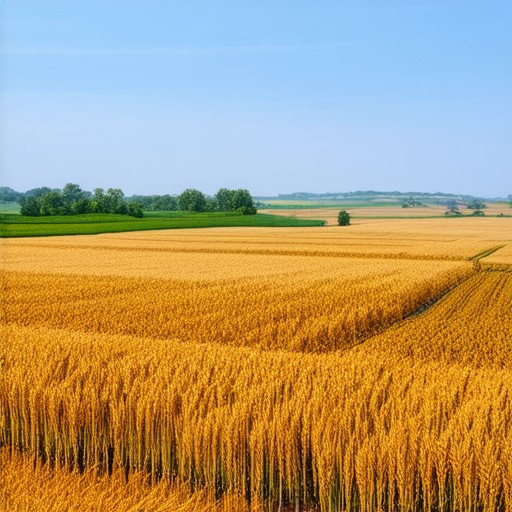
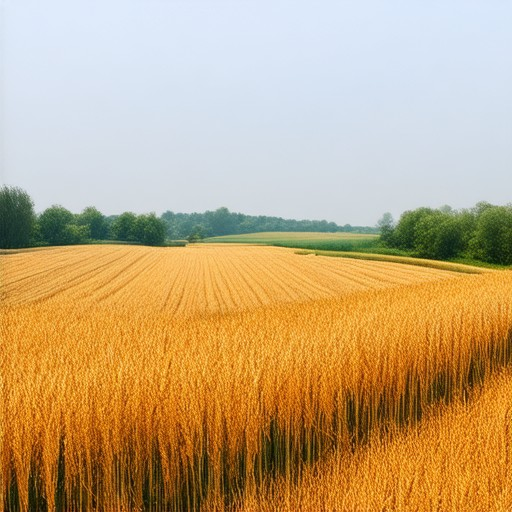

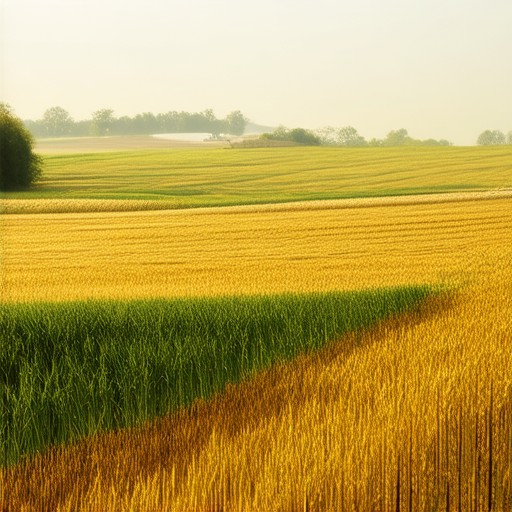
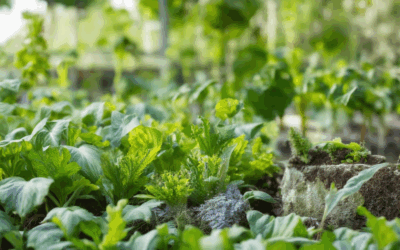
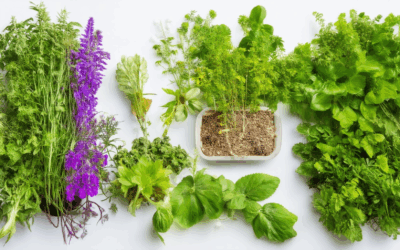
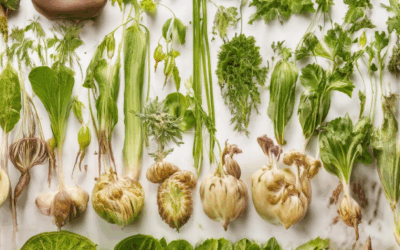
0 Comments